Historic Places
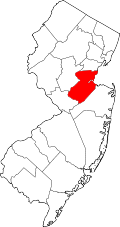
Middlesex County Cultural and Heritage Commision
Cranberry Mills
South Main Street and Evans Drive
Cranbury, NJ 08512

This gristmill stone commemorates Cranberry Mills, the first industry in Cranbury - erected by Thomas Grubbs in 1737, on the south side of Cranbury Brook. The village, was once called Cranberry or Cranberry Town, changed its name to Cranbury late in the 19th century. The gristmill formed the nucleus for the development of the Village of Cranbury, drawing settlers, post houses, inns, churches and small businesses related to farming. A dam for waterpower was built, creating a roadway over the brook and creating a small lake, Brainerd Lake, so called in honor of the 18th century missionary, David Brainerd. The dam, roadway and gristmill were constructed at the intersection of two major Indian trails, one from South Amboy and one from New Brunswick.
In 1840, a water-powered sawmill was erected next to the gristmill but both were destroyed by fire, rebuilt and razed again by fire. After an 1860 blaze, the gristmill was rebuilt and a miller's house was erected south of the mill, at 6 South Main Street. Serving as Cranbury's Police Station from 1968 to 1985, the miller's house is now maintained by the Cranbury Historical and Preservation Society as the Cranbury History Center. In 1939, the inactive gristmill was demolished and the area was named Memorial Park, dedicated in 1949 to Cranbury Veterans of World War I and subsequent wars.
Cross Keys Tavern
South James Street
Woodbridge, NJ 07095
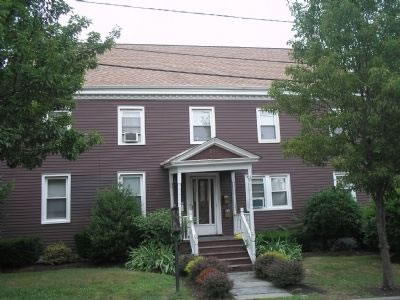
This tavern, operated at the time by John Manning, hosted the overnight stay of George Washington April 22, 1789 on route to his inauguration on April 30, 1789. Washington was accompanied on the part of the journey from New Brunswick to Rahway by Captain Nathaniel Heard and militia from Woodbridge. The tavern was originally located at the corner of Main Street and Amboy Avenue.
Trinity Episcopal Church
Rahway Avenue
Woodbridge, NJ 07095
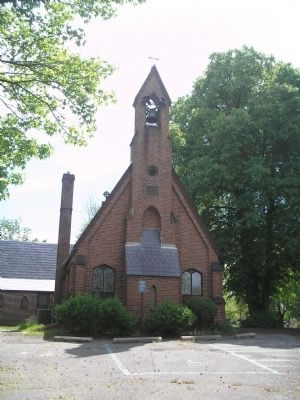
First service held December 29th 1703 By Rev. John Keith. First Church erected about 1712 Second Church erected on old site 1754. Charter granted by King George III December 6th 1769. Second Church destroyed by fire 1858. Corner Stone of present Church laid July 7th 1860. Consecrated May 20th 1861 by Rt. Rev. W.H. Odinheimer Bishop of the Diocese of New Jersey.
Buccleuch Mansion
George Street
New Brunswick, NJ 08901
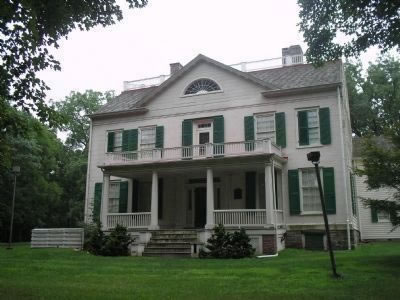
Built about 1735 and occupied until 1774 by Anthony White whose wife was Elizabeth, daughter of Lewis Morris, and whose son was General Anthony White.
Owned and occupied from 1774 by General William Burton of the British Army.
Owned by the Commissioners of Forfeited Estates 1776-1783. Occupied in 1776 by Colonel George Janeway and in 1777 while the British occupied the city by the Enniskillen Dragoons.
Owned and occupied 1783-1798 by Colonel and Commissary General Charles Stewart and 1798-1820 by John Garnett, scientist and author.
Owned and occupied from 1821 by Colonel Joseph Warren Scott, who gave it the name Buccleuch, and later by his grandson, Anthony Dey.
Given with its land to the city of New Brunswick in 1911 by Anthony Dey in the name also of Mary Laidlie Dey, Joseph W. Dey and Richard Warick Dey.
Daniel S. Schanck Observatory
George Street
New Brunswick, NJ 08901
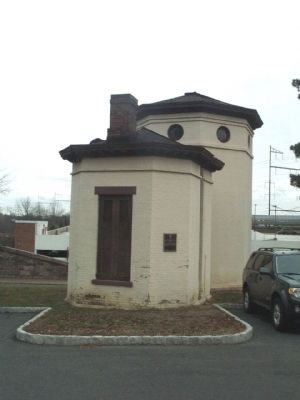
The Daniel S. Schanck Observatory, a two-story edifice which includes a revolving roof and a rear wing connected by a passageway, was designed by Willard Smith. The observatory was built to accommodate the study of astronomy in the Rutgers Scientific School, which was established as a department of Rutgers College in 1862. Named in honor of its donor Daniel S. Schanck of New York City, the Observatory was dedicated on June 18, 1866.
Van Nest Hall
Hamilton Street
New Brunswick, NJ 08901
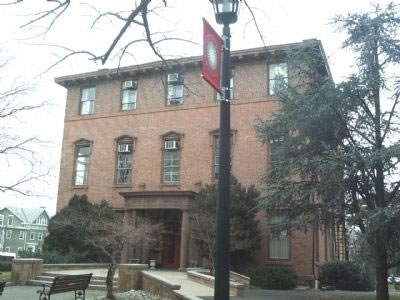
Originally two stories, Van Nest Hall was designed by Nicholas Wyckoff. Two nineteenth-century student literary societies, Peithessophian and Philoclean, occupied the first floor and a museum and the chemical laboratory of Lewis C. Beck, professor of chemistry and natural philosophy filled the remainder of the building. It was named for Abraham Van Nest, a New York City merchant and devoted trustee of Rutgers College, 1823 to 1865. In 1893, Van Nest Hall was remodeled and a third floor and porch were added through the generosity of Mrs. Ann Van Nest Bussing, the daughter of Abraham Van Nest.
Geology Hall
Somerset Street and George Street
New Brunswick, NJ 08901
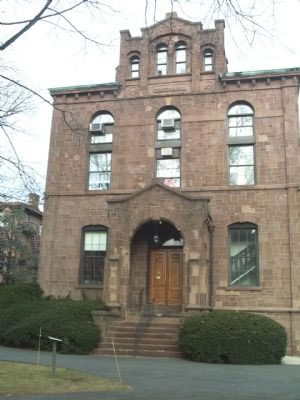
This brownstone structure was designed by Henry Janeway Hardenbergh, the great-great-grandson of Rutgers’ first president. The building served as home to the departments of physics, military science and geology. The Rutgers Geological Museum, housed on the second floor, has included important collections of minerals, fossils, Native American artifacts, modern shells, and a 10,000-year-old mastodon acquired by Professor George H. Cook in 1870.
Guest House
Livingston Avenue and Morris Street
New Brunswick, NJ 08901
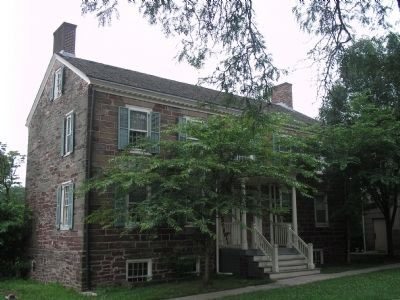
Built by Henry Guest, 1760, of local stone. Thomas Paine once stayed here briefly. Relocated in 1925, became Art Center in 1940.
Kirkpatrick Chapel
Somerset and George Streets
New Brunswick, NJ 08901
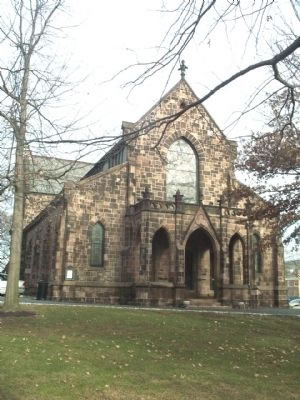
Kirkpatrick Chapel, designed by Henry Janeway Hardenbergh (great-great-grandson of the first president of Rutgers, also the architect of Geology Hall), was built as a chapel and library. The library was removed in 1903, thus increasing the seating capacity in the Chapel from 300 to 600 persons. The Chapel is named for Sophia Astley Kirkpatrick of New Brunswick, whose bequest financed the building. The interior walls have traditionally displayed portraits of the presidents and other prominent leaders of Rutgers.
Winants Hall
Somerset Street
New Brunswick, NJ 08901
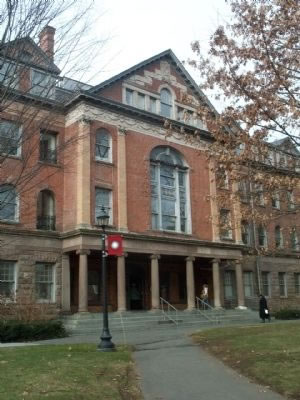
Designed by New York City architect Van Campen Taylor (Rutgers College, Class of 1867), Winants Hall was Rutgers’ sole dormitory until 1914. It is named for Garret E. Winants, a wealthy philanthropist from Bayonne who in 1889 presented a sketch of a proposed dormitory building and funded its construction. In the late 1940’s the building was converted for use by departments and administrative offices of the University. Following a two-year restoration, Winants Hall was rededicated on November 9, 1990.
Governor's House
Kearny Avenue and Harrison Place
Perth Amboy, NJ 08861
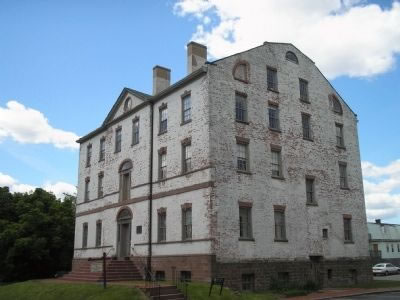
Built by the colonial proprietors of East Jersey in 1762, with bricks which were brought from England. Occupied first by Frederick Smyth, Chief Justice of the colony. Then, in 1774, by William Franklin, who was appointed Governor by the Crown. In 1809 it became a hotel called the Brighton House at which time the south wing was added. During the Civil War it was patronized by Army and Navy officers of prominence.
St Peter's Church - Old Parish in the State
Rector Street
Perth Amboy, NJ 08861
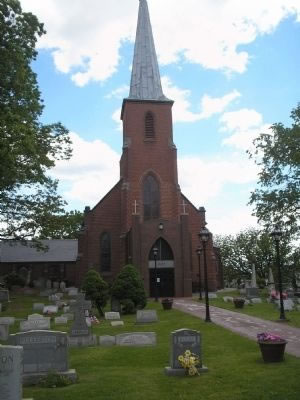
St. Peter’s is the oldest parish in the state. Founded in 1698 when the Bishop of London sent the Rev. Edward Portlock to be its’ minister. Chartered in 1718 by King George I. Used as a barracks for British troops in 1776. Here the colonial governors attended service. Here the first ordination to the ministry within this state was held in 1788. Here the first Diocesan Convention, second sitting was held in 1786. Here nine Diocesan Conventions were held from 1786 to 1816.
Old School Baptist Church
Main Street
South River, NJ 08882
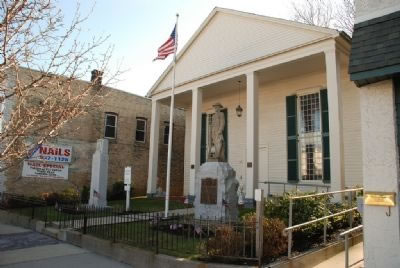
Built in 1805.